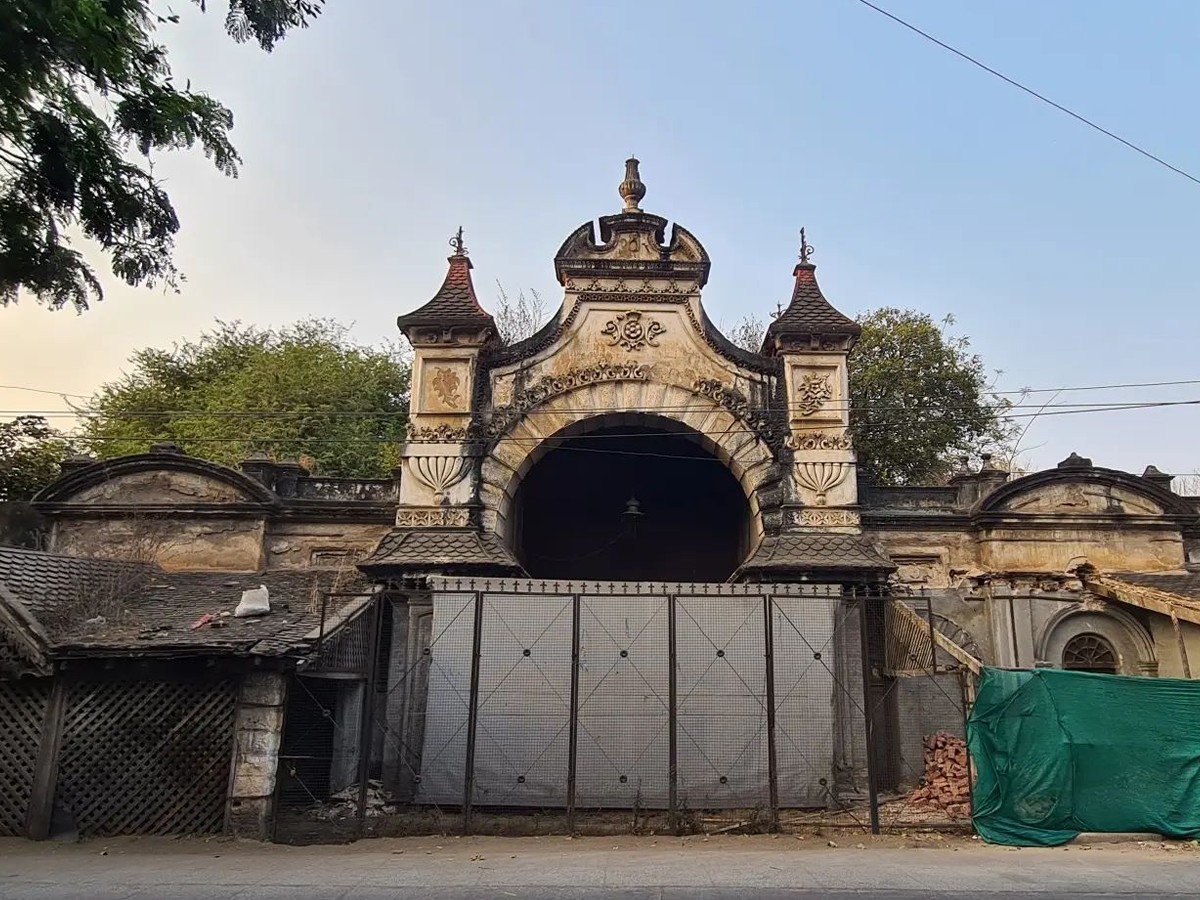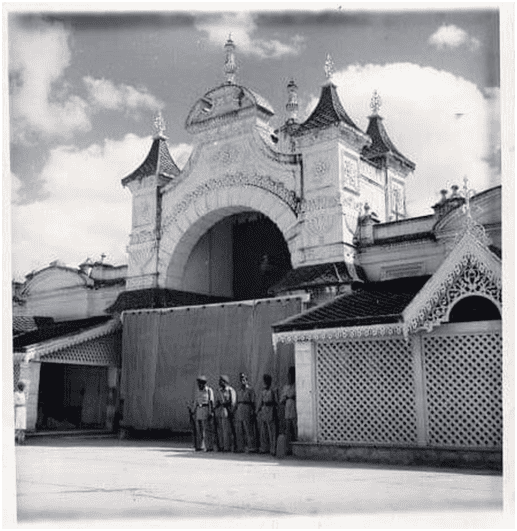
The Nazri Bagh Palace complex was originally built by a nobleman Kamal Khan and was later sold to the Sixth Nizam, Mir Mahboob Ali Khan, who bought it for his heir apparent, Mir Osman Ali Khan, who then moved in there at the young age of 16.
The main buildings in this palace complex (the Mubarak Mansion, the Osman Mansion and a large library building, Masjid-e-Judi and Ghadial Gate) are grouped into two sections — the eastern wing and the western wing.

The structure known as Nazri Bagh located in the western wing of this palace complex was added in the years from 1907 to 1909. It was also known as Mubarak Mansion and was part of the Nizam’s private estate. The main entrance to Nazri Bagh was the famous Purdah Gate that used to be guarded by the Maisaram Regiment, police and Sarf-e-Khas army during the hey days of the Hyderabad State.
The gate got its name from the fact that a curtain always hung on it. When the Nizam left the palace, the purdah was lifted to suggest that the Nizam had gone out of the palace. It was this building that was used by Mir Osman Ali Khan for official and residential purposes. It was also the place where the Seventh Nizam stayed when he ascended the throne in 1911 and continued to live there until his death in 1967.
Without going into any more history of the Nazri Bagh palace which is already known, my focus will rest on the interpretation of the symbol in question. Since the palace complex is out of bounds for common folks like me, I presume that this symbol was engraved on the Nazri Bagh palace building when it was built.

I have tried to identify the legends on the tree-like panel of Nazri Bagh. These are the twelve Zodiacal signs in Arabic based on the concept of ‘ilm ahkam al nujum’ meaning the science of the judgments of the stars. On the left side are seen: Al Hamal – Aries, Al Hut – Pisces, Al Addalu – Aquarius, Al Judi – Capricorn, Al Qaws – Sagittarius and Al Aqrab – Scorpio. On the right side are seen: Al Saur – Taurus, Al Jawza – Gemini, Al Saratan – Cancer, Al Asad – Leo, Al Azraa – Virgo, and Al Mizan – Libra.
This finding led to further questions in my mind. When Persian traditions were replicated in large measure in the Deccan, including adopting Persian as the official language of the Asaf Jahi court at least till the time the Nazri Bagh was built, why were the twelve Persian zodiacal signs not used in architectural embellishment? Warrag – Aries, Gāv –Taurus, Dō-pahikar – Gemini, Karzang – Cancer, Šagr – Leo, Hošag – Virgo, Tarāzūg –Libra, Gazdum – Scorpio, Nēmasp – Sagittarius, Wahig – Capricorn, Dōl – Aquarius, and Māhīg – Pisces in Persian astrology do not figure here.
While cosmology, astronomy, and geomancy drew connections between design and practices, specific nakshatras (constellations of the zodiac) associated with different attributes based on the science of astrology were generally not permitted and were considered an act of ignorance in Islam. Yet, the depiction of the Arabic Zodiac on this panel looks like a pleasing mix of Islamic style and Hindu motifs. Not to forget, the place where Mir Osman Ali Khan is buried, the Masjid-e-Judi built much later in 1937, could probably have got its name from the Capricorn sign in this panel.
Prof Salma Ahmad Farooqui is the Director of H K Sherwani Centre for Deccan Studies, Maulana Azad National Urdu University.


